- Administrator
- Albums and Singles

Over the space of this album, a slow and patient unfolding occurs. Strings are able to breathe, finding the space they need to move, although their movements are lurching, clunky, and convulsive. Seabuckthorn illuminates the distance – a family, a time spent together, and a beautiful summer. It has the feel of old European adventures and trips to glorious cities, markets, churchyards, and yawning fields, with a population yet to face the music of climate change or even a World War.
Years erode the features, and a scattering of distortion eats away at the music. The year in question has faded away, and time has gone way beyond evening or dusk, but Seabuckthorn brings it back and makes it relevant once again. The music is late and so is the hour, but even as the light dims, a beautiful, rusty afterglow is left behind, a dull gleam coming from a King's crown.
More information can be found here.
Read More
- Administrator
- Albums and Singles

Soundtrack for the Jan van Hasselt film Der Weiße Elefant, recorded 2015/2016.
More information can be found here.
Read More
- Administrator
- Albums and Singles
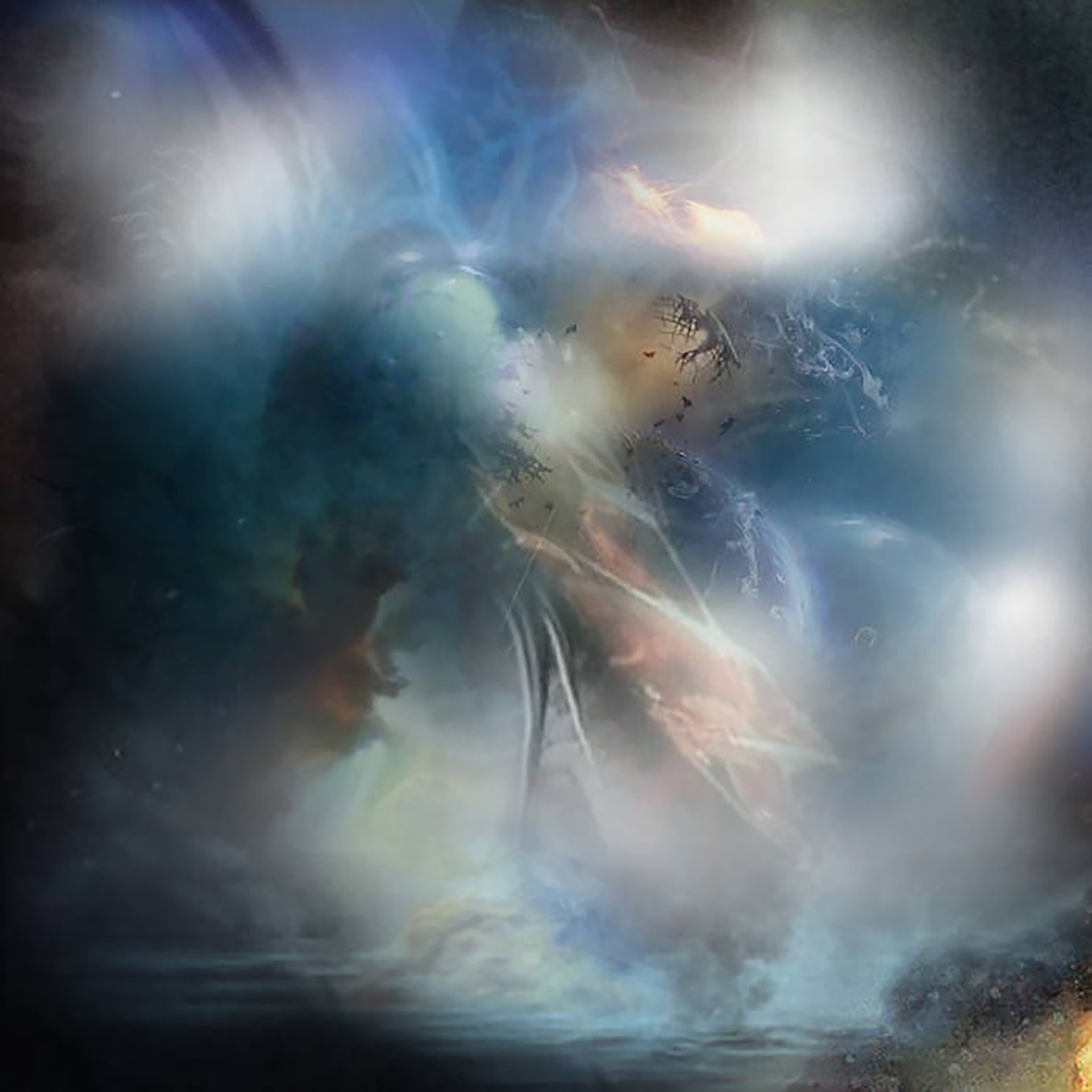 Given how many years I have been actively chasing down unique and bizarre albums, it is mystifying how most of Carl Stone's oeuvre has eluded me thus far, though his recent albums have admittedly felt almost too experimental for me (and in a hyper-caffeinated way to boot). Sometimes, however, I finally hear the right song at the right time and everything clicks into place. In the case of Stone, that revelation came in the form of the Ganci & Figli EP, wherein he gleefully transforms some anthemic contemporary dance music samples into two very divergent and inventive collages. "Figli" in particular is fun and deliriously rapturous in a way that I almost never encounter in experimental music. The same is true of the even more eccentric "The Jugged Hare," which was released earlier in the year. While I am not sure if Stone has recently perfected this side of his art or if my own sensibility has finally shifted enough to embrace what he has been doing all along, this recent pair of singles feels like the work of man who is operating on an entirely different level than his peers, playfully cannibalizing pop culture to make high art that feels like a confetti bomb going off at an out-of-control dance party.
Given how many years I have been actively chasing down unique and bizarre albums, it is mystifying how most of Carl Stone's oeuvre has eluded me thus far, though his recent albums have admittedly felt almost too experimental for me (and in a hyper-caffeinated way to boot). Sometimes, however, I finally hear the right song at the right time and everything clicks into place. In the case of Stone, that revelation came in the form of the Ganci & Figli EP, wherein he gleefully transforms some anthemic contemporary dance music samples into two very divergent and inventive collages. "Figli" in particular is fun and deliriously rapturous in a way that I almost never encounter in experimental music. The same is true of the even more eccentric "The Jugged Hare," which was released earlier in the year. While I am not sure if Stone has recently perfected this side of his art or if my own sensibility has finally shifted enough to embrace what he has been doing all along, this recent pair of singles feels like the work of man who is operating on an entirely different level than his peers, playfully cannibalizing pop culture to make high art that feels like a confetti bomb going off at an out-of-control dance party.
In classic inscrutable Stone fashion, Ganci & Figli takes its title from "an amazingly scaled, 24-hour rosticceria panineria in the city of Palermo" that he once visited with composer/saxophonist Gianni Gebbia.Whatever ties a panini place in Palermo to these two pop music cut-ups is likely to remain a mystery to me forever, but Stone's stated intention for the release was to make two different yet complementary pieces from the same set of samples ("like a prelude and fugue").I suppose it is possible that the song being deconstructed was a bit of pop music that Stone heard that day in Palermo, but my attempts to deduce the song's original language have been wildly unsuccessful thus far, as his manic sample-chopping rarely allows even a single syllable to escape unmolested.Despite that aggressiveness, Stone is remarkably sensitive to both the character and inherent soul of his source material, dramatically altering the structure and the pace while making sure the fundamental essence remains vividly intact.Ganci & Figli reminds me of an inspired variation upon classic late '90s Oval albums, except Stone uses his chopped-up and skipping approach to emphasize and enhance moments from the source material rather than obscure them.
The opening "Ganci" takes the source material in a slow-motion, dreamlike direction, as two pitch-shifted vocal loops languorously intertwine over a warm haze of synth chords and stammering word fragments.It is quite a gorgeous, endlessly shifting, and sensuous piece of music, calling to mind an underexplored niche somewhere between Clams Casino-style cloud rap and Florian Zeisig’s Enya deconstructions.The following "Figli," on the other hand, has the sped-up and spinning feel of a great experimental film: just a flickering, heavenly swirl of life and color from start to finish.Stone even manages to retain some semblance of the original piece's anthemic dynamics, as the sensory overload of tumbling, chopped-up voices eventually coalesces into a propulsively thumping kick drum groove and a wild, gibbering crescendo of stuttering horn melodies.Right from its first moment, "Figli" is a dazzling tour de force in which Stone deftly steers a manic chaos of stammering, colliding, and overlapping layers into a satisfyingly tight and vibrant pop-like format.Both sides of this single/EP are great, but "Figli" is definitely the piece that reminds me why I became excited about experimental music in the first place: there are no rules and artists are completely free to twist whatever they want into wild and inventive new forms.I dearly wish more musicians were as ambitious and cheerfully reckless as Stone in exploring the limitless possibilities of sound.While Ganci & Figli is admittedly a brief statement, it is nevertheless a perfect celebration of what is possible when a suitably warped mind and resourceful nature collide with compositional rigor and an endlessly shifting, oversaturated world of cultural stimuli eagerly waiting to be hacked apart and repurposed.
Samples can be found here.
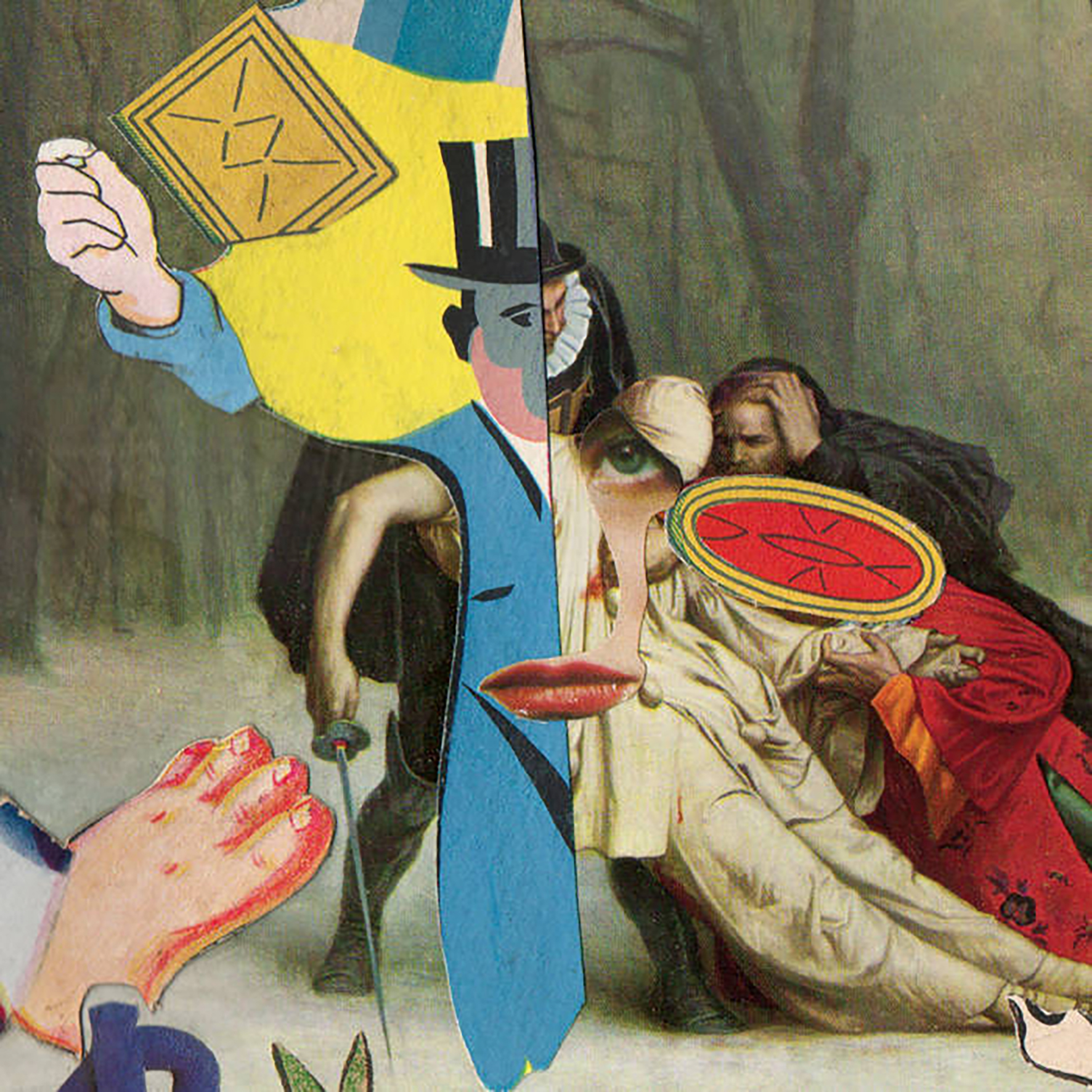 The "Au Jus/The Jugged Hare" single, released earlier this spring, is very similar to Ganci & Figli in its compositional approach, as both pieces are stuttering and manic MAX-generated deconstructions of fare that was originally far more straightforward and melodic.
The "Au Jus/The Jugged Hare" single, released earlier this spring, is very similar to Ganci & Figli in its compositional approach, as both pieces are stuttering and manic MAX-generated deconstructions of fare that was originally far more straightforward and melodic.
In fact, "Au Jus" is an even a more concise exploration of the same stylistic territory, resembling a mainstream pop/R&B jam that has been chopped to pieces and reassembled into a wildly different bit of dance pop that feels like it was composed by a psychedelic woodpecker.While it is far too fragmented to quite describe as melodic, "Au Jus" nevertheless feels like a coherently structured piece with a pleasingly erratic and kaleidoscopic groove.More importantly, Stone executes that groove with all the skill and finesse of a veteran techno producer, seamlessly manipulating dynamics and intensity as he builds to a volcanic crescendo of jackhammering loop assaults.The whole thing sounds like it was inspired by strobe lights, except the strobing effect is deliciously unpredictable in both tempo and intensity, resulting in a rapid series of snapshots with entirely new transitions and context.And, of course, an exhilarating sense that the whole swirling cacophony could go completely off the rails at any second.
One could argue that the following "The Jugged Hare" actually does go completely off the rails, albeit in the best way possible.Given how aggressively Stone mangles his source material, it is not entirely easy to guess what the piece originally sounded like, but it seems to have been a cheery piece of banjo- and flute-driven folk music.It also sounds like a cheery piece of banjo and flute-driven folk music after Stone's intervention, but a considerably more deranged and sped-up one, as the vocals are diced into a frenetic swirl of yodel-like fragments.Amusingly, I have seen the "The Jugged Hare" described elsewhere as "maddening," which is an understandable conclusion, as it calls to mind a children's TV show being played at double-speed while a madman mischievously plays with the saturation and hue of the bright primary colors.I quite like that effect though, as it makes for quite an unhinged and entertaining listen.Also, Stone is not the sort of artist who is content with merely creating something wildly ridiculous or crazy-sounding, as the piece's relentlessly insistent cheer gets pulled apart in the piece's final moment to reemerge as an unexpectedly poignant locked-groove-like outro.While it does not hold up quite as well to repeat listening as Ganci & Figli, "The Jugged Hare" still feels like one hell of an artistic statement, boldly stepping outside the bounds of what is cool and trendy to indulge a breathless, candy-colored plunge into surreal madness.
Samples can be found here.
Read More
- Administrator
- Albums and Singles

An end and a new beginning. Kommuniqué Zéro is the debut outing of new Black To Comm related entity Mouchoir Ètanche. And it is the final release in Dekorder's 10-Year Anniversary Hybrid-Vinyl Series (a mere 7 years too late). Combining real and fake acoustic instrumentation, sampling, field recordings and excessive yet inaudible post production this is a powerful statement of intent. Influences are ranging from (French) Classical & Opera to the anecdotical compositions of Luc Ferrari, Chinese Opera, Sacred Music, Collage and Free Improvisation.
Marc Richter records as Black To Comm for Thrill Jockey, Type and Dekorder and as Jemh Circs for his own Cellule 75 imprint. He also produced soundtracks and acousmatic multichannel installations for institutions such as INA GRM Paris, ZKM Karlsruhe and Kunstverein Hamburg.
The Dekorder 10-Year Anniversary Hybrid-Vinyl Series so far included LPs by Pye Corner Audio, Excepter, Experimental Audio Research, Vindicatrix, Kemiallysät Ystävät, Ensemble Economique, Alien Radio, Black To Comm and Le Révélateur.
More information can be found here.
Read More
- Administrator
- Albums and Singles
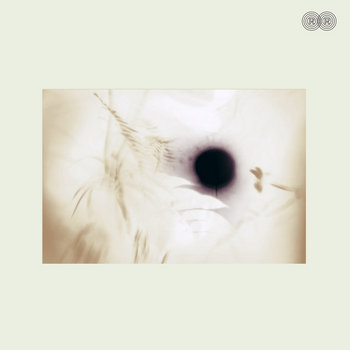
Drones for keeping sane. Music for adapted Benjolin (Miasmachine), Pitch-shifter and Echoplex. Made in Schöneberg, Berlin, April 2020 by Erik K Skodvin. Mastered by Martyn Heyne / Lichte Studio.
Rrose Sélavy - RR#02
More information can be found here.
Read More
- Administrator
- Albums and Singles

A Bit Too Far is now available digitally here
We are offering this as a pay what you want release.
All proceeds are being donated to Glory Temple Ministries in Miami.
Pastor Ronae Cambridge says: 'Glory Temple Ministries is a place that offers an incredible worship experience in a nonjudgmental way: all are welcome at Glory Temple.
We believe that by teaching the gospel of Jesus Christ, lives will be changed.
We carry out the teachings of Jesus through our outreach of feeding over 10,000 people a month, offering clothing, adult diapers, baby items, and other personal hygiene products (when available) to those who are in need. We offer prayer and counseling.'
Lyrics are forthcoming at: https://www.littleanniebandez.com
Read More
- Administrator
- Albums and Singles
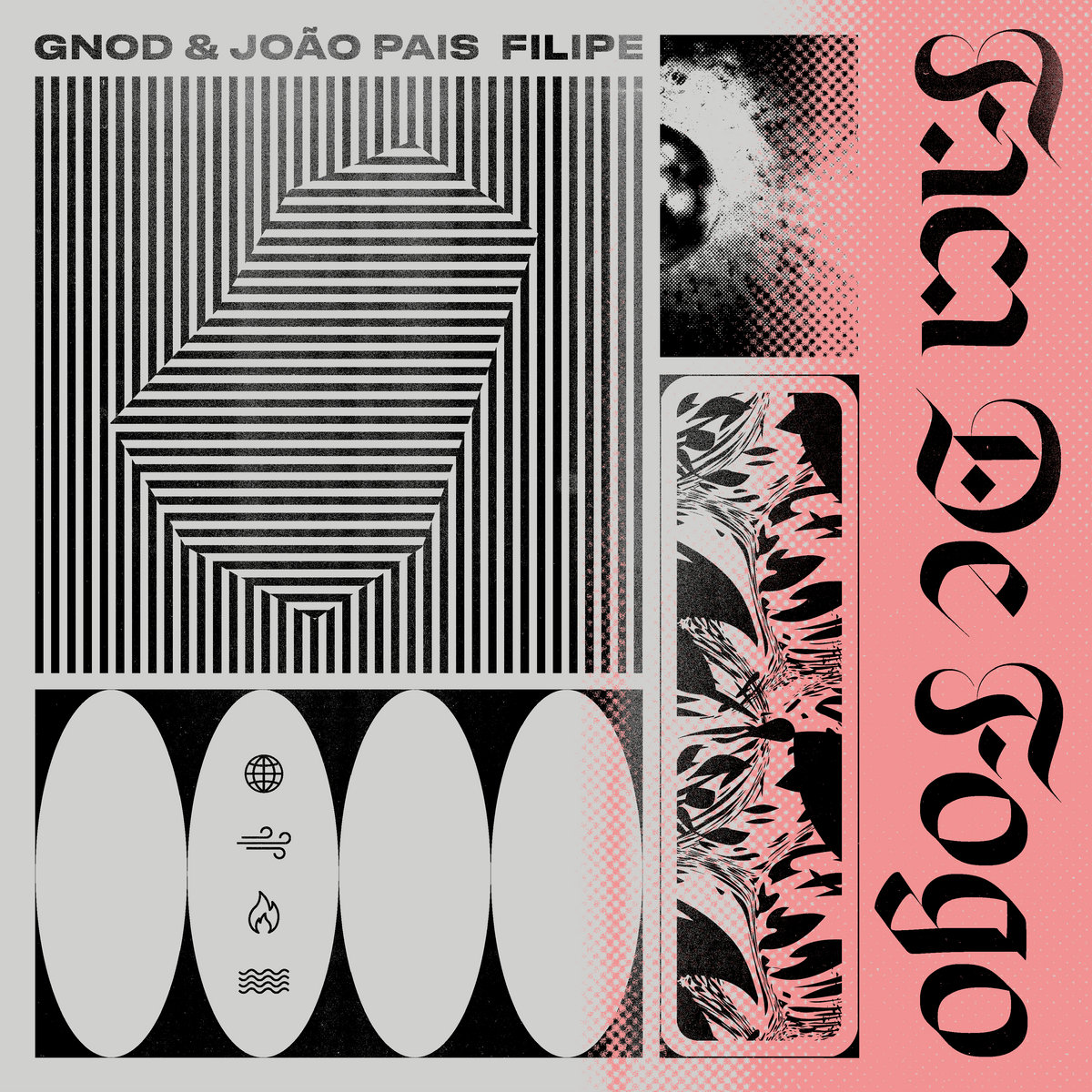 GNOD has made a career —a lifestyle —as a creative collective of musicians that weave together rhythmic, trance-inducing psychedelia and cacophonous pandemonium, unafraid of experimentation across genres. For this release, they connected with Portuguese experimental percussionist João Pais Filipe after meeting up at the Milhoes de Festa event in Barcelos, Portugal. This resulting experiment, improvised over 3 days and recorded in four at João's metal shop, was originally intended to premiere at the (now-socially distanced) 2020 Supersonic Festival in Birmingham, England. Overflowing with meditative tribal percussion and ritual, shamanic musical mantras, these four lengthy tracks ride a rollercoaster of moody atmospherics, Kraut-driven psychedelia and industrial mechanization, and will take an already widened musical mind for a ride.
GNOD has made a career —a lifestyle —as a creative collective of musicians that weave together rhythmic, trance-inducing psychedelia and cacophonous pandemonium, unafraid of experimentation across genres. For this release, they connected with Portuguese experimental percussionist João Pais Filipe after meeting up at the Milhoes de Festa event in Barcelos, Portugal. This resulting experiment, improvised over 3 days and recorded in four at João's metal shop, was originally intended to premiere at the (now-socially distanced) 2020 Supersonic Festival in Birmingham, England. Overflowing with meditative tribal percussion and ritual, shamanic musical mantras, these four lengthy tracks ride a rollercoaster of moody atmospherics, Kraut-driven psychedelia and industrial mechanization, and will take an already widened musical mind for a ride.
Having followed GNOD for some time now, I look forward to their many varieties of sound exploration. WIth a fervent following, the collective has been mistaken for a quasi-religious assemblage by the uninitiated with album titles like InGnodWeTrust, but if any religion is present, it is of the divine in music. Pushing the boundaries of ambient, industrial, noise, and jungle, the group has a residency at The Islington Mill in Salford, UK that far exceeds sound to include light and art installations which serves as their creative workspace, as well as to house members. Their sound is genreless from album to album, generally freeform in production, yet with a consistent honoring of largely western-driven industrial sounds.
Percussionist and instrument designer Filipe plays in multiple experimental and rock outfits, having collaborated with Z‚ÄôEV, Damo Suzuki (Can), Rafael Toral, Swiss composer Fritz Hauser, free jazz saxophonist Evan Parker, and a myriad of others. His addition to the collaboration tones down the often inorganic underpinnings of GNOD‚Äôs craft; while the guitars and noise elements are still apparent, these are not as frequently at the forefront of the music, instead allowing Filipe‚Äôs organic rhythms to serve as the foundation. Largely instrumental, only the title track is imbued with distorted vocals. Faca De Fogo, which translates to "Knife of Fire" in Portuguese, consists of 4 minimal, lengthy tracks with titles that further represent the organic flow. Each track focuses on the four elements of matter: "Faca de Terra" (earth), "Faca de Ar" (air), "Faca de Fogo" (fire) and "Faca de Água" (water).
GNOD brings a spacey and psychedelic vibe to the party with synthetic instruments such as samplers, loop stations and noise machines, but Filipe’s passionate expertise on his massive assortment of percussive instruments brings a pulsing tension to the table: modified bass drums played with hands and sticks, tuned toms, homemade cymbals, as well as snares and a healthy dose of ominous gong. Bass, guitar, and clarinet flesh out the sound, but in all cases ride the waves of rhythm: Filipe is in control, while GNOD learn from the master.
In essence, this is exactly what GNOD seek to do: learn and grow, constantly pushing the boundaries of what they do, and who they are. Both collaborators have promised there will be more records in the future. I, for one, am hoping this is sooner, rather than later.
Read More
- Administrator
- Albums and Singles
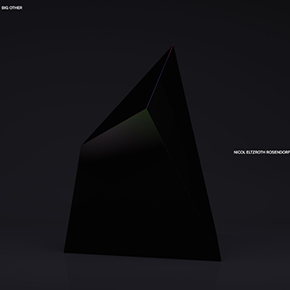 As Scratched Glass, Nicol Eltzroth Rosendorf (alongside Jon Lukens) has released two stripped down tapes riddled with obscure sounds and intricate, nuanced production. Minimal, yet rich; dark, yet inviting, they were a study in contrasts and contradictions. For Big Other, he not only has opted for the vinyl format, but also working under his own name. Indicative of change, the record is certainly a different sounding one based on his previous work. With the integration of rhythms and the vocal contributions of Jarboe, but still featuring just the right amount of abstraction, the final product feels like the natural evolution of a composer/producer who had already set a high water mark before, but continues to push ahead.
As Scratched Glass, Nicol Eltzroth Rosendorf (alongside Jon Lukens) has released two stripped down tapes riddled with obscure sounds and intricate, nuanced production. Minimal, yet rich; dark, yet inviting, they were a study in contrasts and contradictions. For Big Other, he not only has opted for the vinyl format, but also working under his own name. Indicative of change, the record is certainly a different sounding one based on his previous work. With the integration of rhythms and the vocal contributions of Jarboe, but still featuring just the right amount of abstraction, the final product feels like the natural evolution of a composer/producer who had already set a high water mark before, but continues to push ahead.
The abstraction and use of unidentifiable sounds that was so prevalent with Scratched Glass are still apparent throughout Big Other, but for most of the six pieces presented here it is used sparingly to flesh out the more commanding sounds of drums, voice, and guitar.The low contrabass rumble that opens "Thrown Into Being" would not have been out of place on one of those earlier cassettes, but the live percussion and distorted guitar that are later added make for a very different sound.The pummeling drums and buzzing guitars result in a brilliant sense of tension that builds and builds before relenting to elegant, electronic spaces.
The album's centerpiece, "New Heart," is cut from a similar cloth, but with Rosendorf going off in an entirely different sonic direction.Twinkling passages of electronics lead off as Jarboe's vocal is delicately weaved in.Her wordless performance recurs throughout, befitting the simultaneously dark and inviting mix of various instruments and treatments.As before, Rosendorf brings in commanding drum rhythms, processed to give an undeniable level of intensity and demonstrates his simultaneous skills in sound design as well as composition.With a massive sense of depth and swirling electronics and voices, it is as ominous as it is beautiful.
On the other side of the record, Rosendorf eschews the prominent rhythms for greater variations of tone and texture that may be somewhat different overall, but complement the first two pieces perfectly."Several Days Later I Got Up the Nerve to Look at Myself in the Mirror for the First Time" begins calmly enough.Droning electric piano is complemented with jagged, metallic FM bells and chimes giving a bleak melodic accompaniment to the textural hum.On the surface it is all pleasant, but there are hints of a repressed, malicious force that is just there waiting to be unleashed. Around the midway point, that darkness breaks through in the form of harsh guitar and electronic processing that pounds through the initially lighter mix.Again he works with contrasts, alternating between the softer and harsher sounds throughout.
The album ends on a three-song suite that again demonstrates Rosendorf’s penchant for working with contrasts and juxtapositions.The first segment, "Shegiah," is a surprising mix of slightly jazzy piano and contrabass.He is working with conventional sounds, but with the skeletal production and sparse arrangement, there is a distinctly morose quality to the piece.In the transition to "Golden Repair" he drops the sparseness for a surge of distorted cello and electronics instead.Brought in tastefully, the dissonant sounds envelope much of the sound that preceded it.By the concluding "A Shield of Ceilings in the Drift" Rosendorf brings everything full circle with the distortion retreating and the piano returning, fleshed out with additional instrumentation and production to close on a calm, somber note.
One of the strengths of Big Other is Rosendorf’s deftness in blending together a myriad of sounds and moods, often into a single piece, perfectly and effortlessly.The smoothness in the transition from the pounding, suspense score rhythms of "Thrown Into Being" into a delicate electronic conclusion is performed expertly, and the simultaneously sacred and profane sounds of "New Heart" are so expansive and diverse all within a single piece.With Scratched Glass, Rosendorf proved himself an expert at creating idiosyncratic sounds and complex, multifaceted production, but with Big Other he has pushed that into a beautiful, multidimensional colossus of a record that is as complex as it is unique.
Read More
- Creaig Dunton
- Albums and Singles

Brainwashed and Negative Capability Editions are proud to exclusively premiere the new album by Nicol Eltzroth Rosendorf, Big Other, and the video for "New Heart." The entire album can be streamed via Bandcamp by clicking here before its release on August 21. "New Heart," (video available here) featuring guest vocals by Jarboe, showcases her expansive voice, adding a human element to the menacing, swirling electronics and guest performer James Joyce’s powerful drums. As Rosendorf began to construct the piece, he says he could hear the ghost of Jarboe's voice throughout as he was composing and mixing, persuading him to ask her to participate. Also an accomplished visual artist working with the likes of Axebreaker, Locrian, and Retribution Body, the accompanying video directed by Rosendorf was filmed during COVID-19 quarantine.  Traveling through a forest, he captures both the isolation and terrible gravity of our current shared experience, but also the potential of hope and new life. Big Other will be released on limited vinyl and digital via Negative Capability Editions on August 21.
Read More
- Administrator
- Albums and Singles
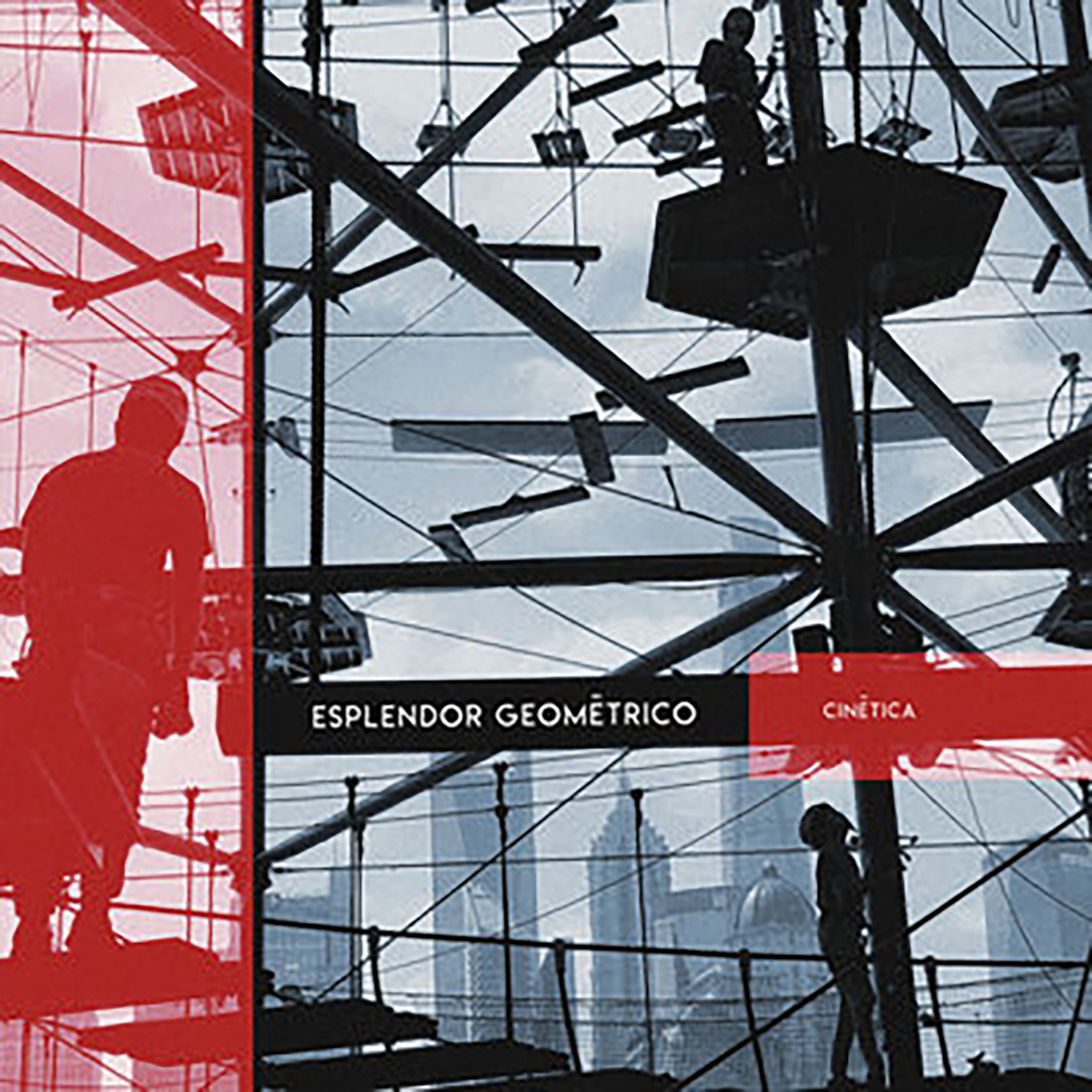 I am not sure which is more remarkable: the fact that these iconic industrialists are currently celebrating their 40th anniversary or the fact that they somehow seem to be getting even better in recent years. Aside from Legendary Pink Dots or Swans, I am hard-pressed to think of any other band that has had such an impressive renaissance after their supposed heyday and this particular case is all the more remarkable since Arturo Lanz has remained so single-mindedly focused on pursuing the same narrow stylistic niche all along. Given that consistency, it is no surprise that Cinética is yet another feast of pummeling industrial-strength percussion loops featuring a yet another handful of alternately propulsive and crushing highlights. However, I was surprised at how this latest batch of rhythmic assaults occasionally transcends the duo's "industrial dance" aesthetic to approach a sort of trance-inducing strain of heavy psych.
I am not sure which is more remarkable: the fact that these iconic industrialists are currently celebrating their 40th anniversary or the fact that they somehow seem to be getting even better in recent years. Aside from Legendary Pink Dots or Swans, I am hard-pressed to think of any other band that has had such an impressive renaissance after their supposed heyday and this particular case is all the more remarkable since Arturo Lanz has remained so single-mindedly focused on pursuing the same narrow stylistic niche all along. Given that consistency, it is no surprise that Cinética is yet another feast of pummeling industrial-strength percussion loops featuring a yet another handful of alternately propulsive and crushing highlights. However, I was surprised at how this latest batch of rhythmic assaults occasionally transcends the duo's "industrial dance" aesthetic to approach a sort of trance-inducing strain of heavy psych.
One of the more fascinating aspects of Esplendor Geométrico’s oeuvre-and the likeliest key to the project's longevity-is how Arturo Lanz has managed to make beat-driven music for so many years while nimbly avoiding just about every single possible trend in underground dance music.Instead, he has stayed relevant by remaining a perpetual outsider, often drawing his inspiration from cultures far outside the cutting-edge dance milieu.While the backbone of the project has long been Lanz's unwavering devotion to the relentless, machine-like repetition of rhythmic loops, he has proven himself to be remarkably resourceful in finding new ways to keep that rigid formula fresh and has never stopped evolving in his own subtle way.The most obvious example of his eclectic approach to innovation was the incorporation of Arabic rhythms on 1991's Sheikh Aljama because that was the theme for an entire album, but an alert listener would have no trouble at all finding nods to sundry other cultures strewn throughout EG's many releases.I would be curious to know how much of that is deliberate and how much is simply absorbed by cultural osmosis, as Lanz has stated that he does not actually listen much outside music beyond "the classics from his youth."He does seem like an especially well-traveled guy though, so it is not hard to believe that he simply moves through life picking up new ideas from the sounds around him like a tirelessly innovative post-industrial sponge.I am especially fond of the more Latin-sounding strains that have found their way into EG's grooves over the years, though there are lamentably no overt nods to Cuba, Colombia, or Brazil this time around.Then again, maybe there are, as both the shuffling and clattering "Friccion" and the manic, skittering "Acoplamiento internacional" seem to have traditional roots that elude me as a non-ethnomusicologist.
More frequently, however, the beats are either fairly straightforward, punishingly industrial, or ambitiously alien. All are equally likely to be great, as both the tempo and the accompanying hallucinatory maelstrom of distorted voices and machine noise tend to play key roles in whether or not a piece catches fire to become something more than just a cool rhythm.For example, the opening "Construcción transformadora" is essentially built from little more than a relentlessly bulldozing and bass-heavy rumble and some distorted guitar chords, but it works beautifully because it is augmented with eerie submerged voices and ping-ponging percussion flourishes.Similarly, "Regulación percusiva" is propelled by a fairly textbook (if overcaffeinated) breakbeat, yet its streaking trails of chirping electronics and swirl of chopped and manipulated voices makes it an unexpectedly absorbing tour de force.The aforementioned "Friccion" is one of the more leftfield delights, as it evokes either a clanking, lurching conga line of robots or a massive mechanical caterpillar.Despite that, it somehow manages to be one of the most improbably soulful and hooky songs on the album due its surreal mélange of soul diva vocals and pitch-shifted weirdness.Elsewhere, "Modulaciones" comes close to completely stealing the show with its uncharacteristically simmering downtempo groove, calling to mind a half-speed homage to "Funky Drummer" enhanced by drifting, ghostly samples of chanting voices.It is easily one of the most nuanced and sensuous pieces that I have heard from Lanz and Saverio Evangelista and I absolutely love it—I would happily listen to an album-length remix of "Modulaciones" alone.
The same is true of the closing "Inercial," which is arguably one of the most distilled and perfect examples of EG's singular vision to date.It is absolutely brilliant in its simplicity, as Lanz and Evangelista take a one second-long beat snippet and loop it into a mercilessly surging and unstoppable juggernaut of seismic abandon.On one hand, it sounds like an out-of-control Carnaval party and a full-scale political riot improbably turned down the same street and merged together, yet the endlessly repeating crunch and throb of the beat almost make me feel like I am sinking into an ecstatic trance-state.Between that and "Modulaciones," Cinética boasts at least two instant classics that make Lanz and Evangelista seem like rhythmic savants on a plane all their own, which is exactly what I have grown to expect from recent EG albums (though those two pieces were still great enough to surprise me anyway).The rest of the album is quite solid as well, however, as there are not any songs that I would describe as either a misfire or too far over-the-top.In fact, even the most album's most indulgent and experimental piece ("Resumen de cantos") manages to be outré enough to keep me interested, resembling a time-slowed and stammering rave of the damned.I suppose I could probably do without the avalanche of bonus material appended to the digital version of the album, as an "all killer, no filler" approach is always best, but I cannot fault Lanz and Evangelista for taking a victory lap after putting the finishing touches on such a murders' row of masterfully crafted and mind-expanding mechanized assaults.
Samples can be found here.
Read More
- Administrator
- Albums and Singles

Sound In Silence is happy to announce the return of Eternell, presenting his new album Imagined Distances.
This is his second release on the label after the highly acclaimed, and already sold out, album Still Light back in 2018.
Eternell is the ethereal and meditative music project of Ludvig Cimbrelius, based in Höör, Sweden. Since 2014 he has released several sublime albums on his own Eternell label and a compilation on Stereoscenic Records, while he is also known for his ambient/dub techno Purl project with releases on labels such as Silent Season, Dewtone Recordings, Archives, A Strangely Isolated Place, Databloem and many others. During the last decade Cimbrelius has also released his music under his own name and various monikers such as Alveol, Surr, Rust, Illuvia, Ziyal, Xpire and others.
Imagined Distances is made up of six long-form tracks with a total duration of something more than 75 minutes. Cimbrelius’ intelligent arrangement blends layers of airy synths, warm pads, drifting guitar melodies, subtle bass rhodes and indistinct dreamy vocals, resulting in one of his most accomplished works to date.
Carefully mastered by George Mastrokostas (aka Absent Without Leave), Imagined Distances is a wonderful album of blissful ambience, restful soundscapes and intricate textures, which appeals to all fans of artists such as bvdub, Jónsi & Alex, Warmth and Moshimoss.
More information can be found here.
Read More

